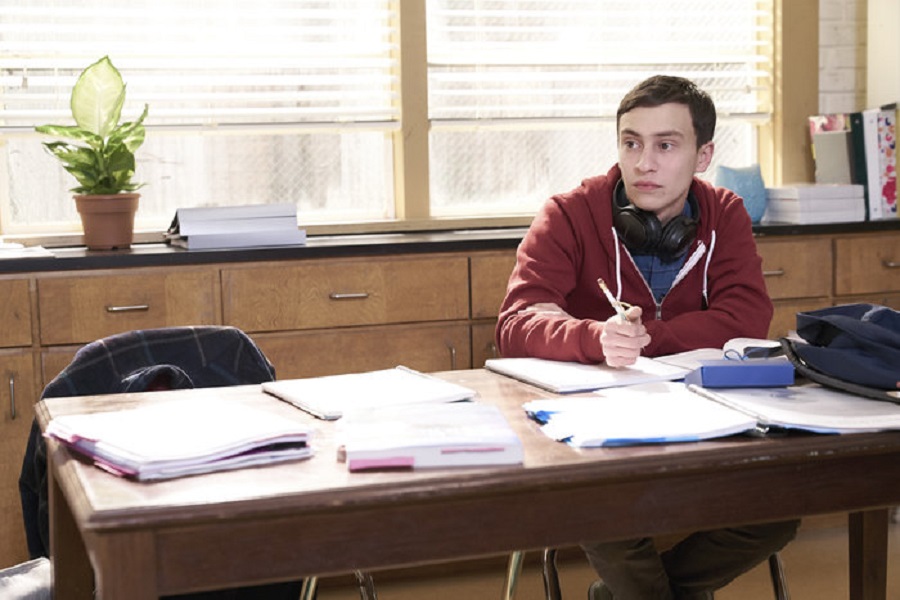Netflix’s new dramatic comedy series ‘Atypical’ premiered on Friday, and people are trying to figure out if it’s better or worse than ’13 Reasons Why’.
Once more, Netflix portrays a controversial topic. This time the main character depicts an autist teenager in the quest for love.
Not the usual coming of age story
On-screen depictions of autism have come a long way. Since Dustin Hoffman’s portrayal of Raymond Babbitt in the 1998 Oscar-winning film ‘Rain Man.’
In fact, Netflix just premiered the first of many upcoming programs with autism as a central theme, with another to hit HBO pretty soon.
‘Atypical’ follows Sam (Keir Gilchrist), a teenage boy with autism, coming of age and dealing with the same issues as his peers: fears about dating and growing up.
His mother Elsa (Jennifer Jason Leigh) has trouble stepping back and letting Sam take more control of his life. The father Doug (Michael Rapaport) finds new ways to connect to his son.
His sister Casey (Brigette Lundy-Paine) tries to carve out her own life apart from the family’s focus on Sam.
The show’s creator and executive producer, Robia Rashid, said she wanted to tell a different kind of coming-of-age story. She was inspired by recent increases in autism diagnoses.
“There are all these young people now who are on the spectrum, who knows … They’re on the spectrum,” she says.
“And [they] are interested in things that every young person is interested in … independence and finding connections and finding love.”
The show is much more than just autism according to the creator
Rashid created the show thinking of focusing it not only on Sam’s autism but also on being a teenager dealing with family and romance.
“It was really important to me that Sam feels like a real person and [not be] defined by his autism,” creator Robia Rashid said.
“That’s not all there is about him. It was a real priority for us in the writer’s room to kind of make sure that we purposefully portrayed him as a real person, not a trope, not a stereotype.”
Rashid hopes that “Atypical” will start a conversation about diversity, particularly when it comes to people with disabilities and special needs.
“Acceptance and diversity and… hearing voices that are not often heard is one of the most important things to me.”
Controversy, in the usual Netflix way
Netflix has sparked controversy once more with the new show. The series has received intense backlash, with many accusing its writers of using autism ‘for laughs’ and perpetuating stereotypes.
“The audience is basically laughing at [Sam] being autistic,” says Elizabeth Bartmess, a writer, and editor with autism who has written often about how autistic characters are depicted in literature.
“That’s partly a problem because in real life, autistic people … get laughed at a lot for showing autistic traits,” she says.
“He’s trying to make a facial expression that will look like the facial expressions that other people expect him to have. … It’s stressful, and it takes up a lot of energy and attention. And you’re always at risk of getting it wrong.”
Other consider the lack of autistic representation in the creative team, cast, and production, it allows the show to mock at autistic people.
“The motto of the autistic community is ‘Nothing about us, without us,” autistic actor Mickey Rowe says.
“There’s such a long history of other people making decisions on behalf of autistic people and deciding what’s best for their well-being and how to represent them to the world.”
Others have defended the show as ‘better than ‘13 Reasons Why‘, the controversial Netflix’s series about teenage suicide and mental health, which screened in March.
On ‘Atypical’, even Sam’s mother attends a support group, and she’s generally better for it.
There are still problems, but the overall attitude towards taking care of yourself and finding a way to deal with things that make you feel hopeless is consistently positive.
Atypical perpetuates a healthy outlook on the issues surrounding counseling and psychological assistance, and it counts.
Changing how teens are portrayed on TV
There have always been two types of teenagers: regular teens and TV teens.
Characters that fit into the latter camp include Serena van der Woodsen, Brooke Davis, Spencer Hastings, Lydia Martin, Summer Roberts, Santana Lopez, and Veronica Lodge.
Don’t get me wrong: Teens on TV were always flawed. They dabbled in cocaine, or they stayed out too late, or, in the case of Teen Wolf’s Lydia Martin, they became banshees.
It’s all a part of the TV fantasy. Watching television is meant to be entertaining.
Then, there’s Netflix. The streaming service is doing a lot for the current state of television. To start, we now watch shows in 6-hour binges instead of
Not only we now watch shows in 6-hour binges instead of part, one-hour periods once a week.
But the streaming giant has done something even cooler: a bridge in the reality gap for TV teens. Finally, offscreen adolescents can see themselves reflected in characters on their favorite shows. And that’s just awesome.

Source: Decider


